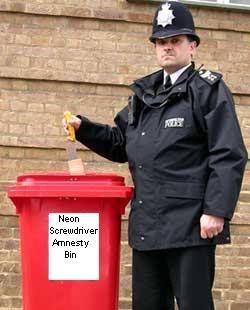With the light switch in 'off mode' the live wire lights my neon screwdriver and the 'return' wire doesn't - OK. If I take the light bulb out and with the switch still 'off' the 'live' wire still lights the neon but now so does the 'retun' wire. All the upstaire lights are like this. The downstairs lights are normal and OK .
I'm not an electrical idiot- I've always rewired my own houses and my sons' and daughters - this house I've never touched . The wireing must be over twenty years old - some of it more.
I wll appreciate your oppinions -RAY
I'm not an electrical idiot- I've always rewired my own houses and my sons' and daughters - this house I've never touched . The wireing must be over twenty years old - some of it more.
I wll appreciate your oppinions -RAY



